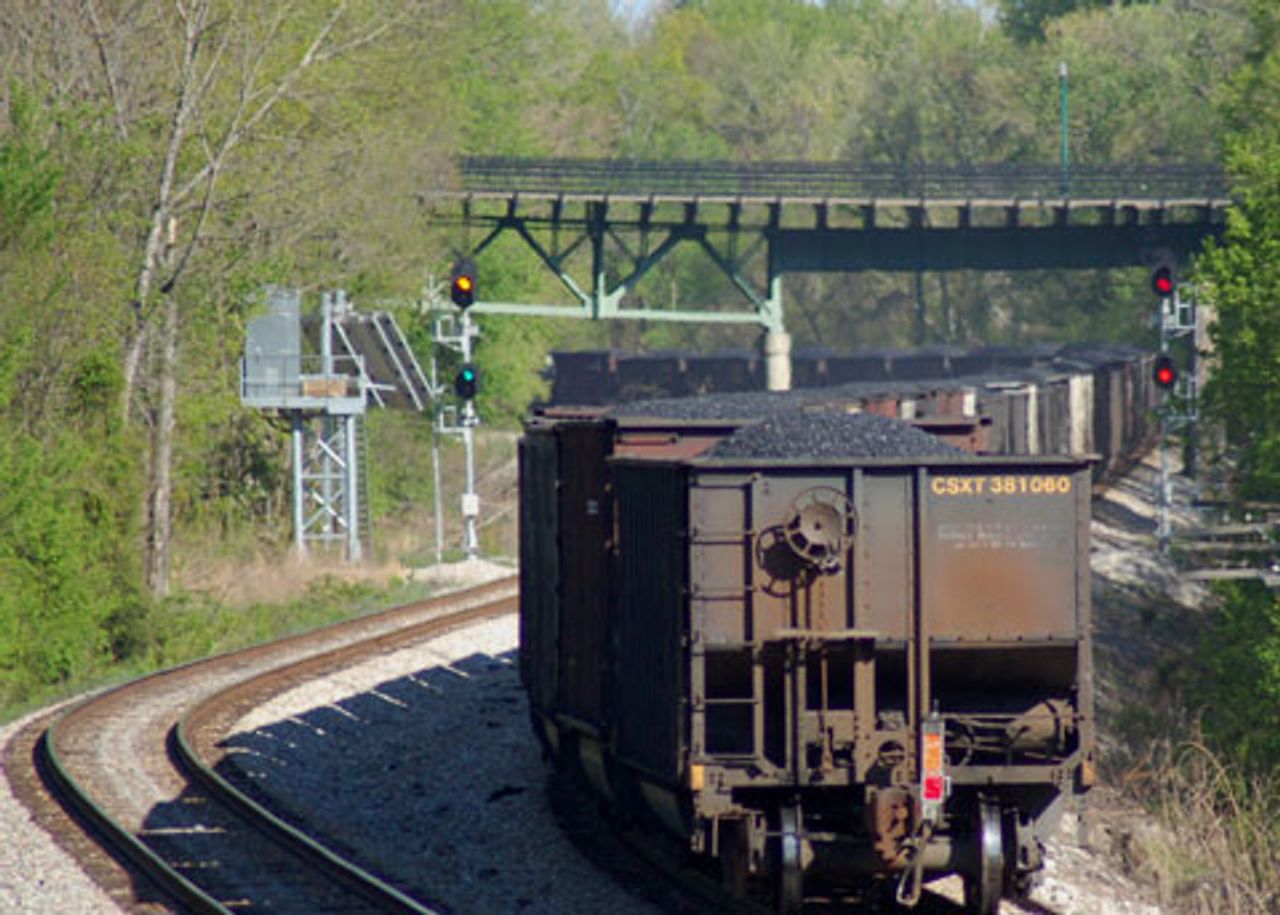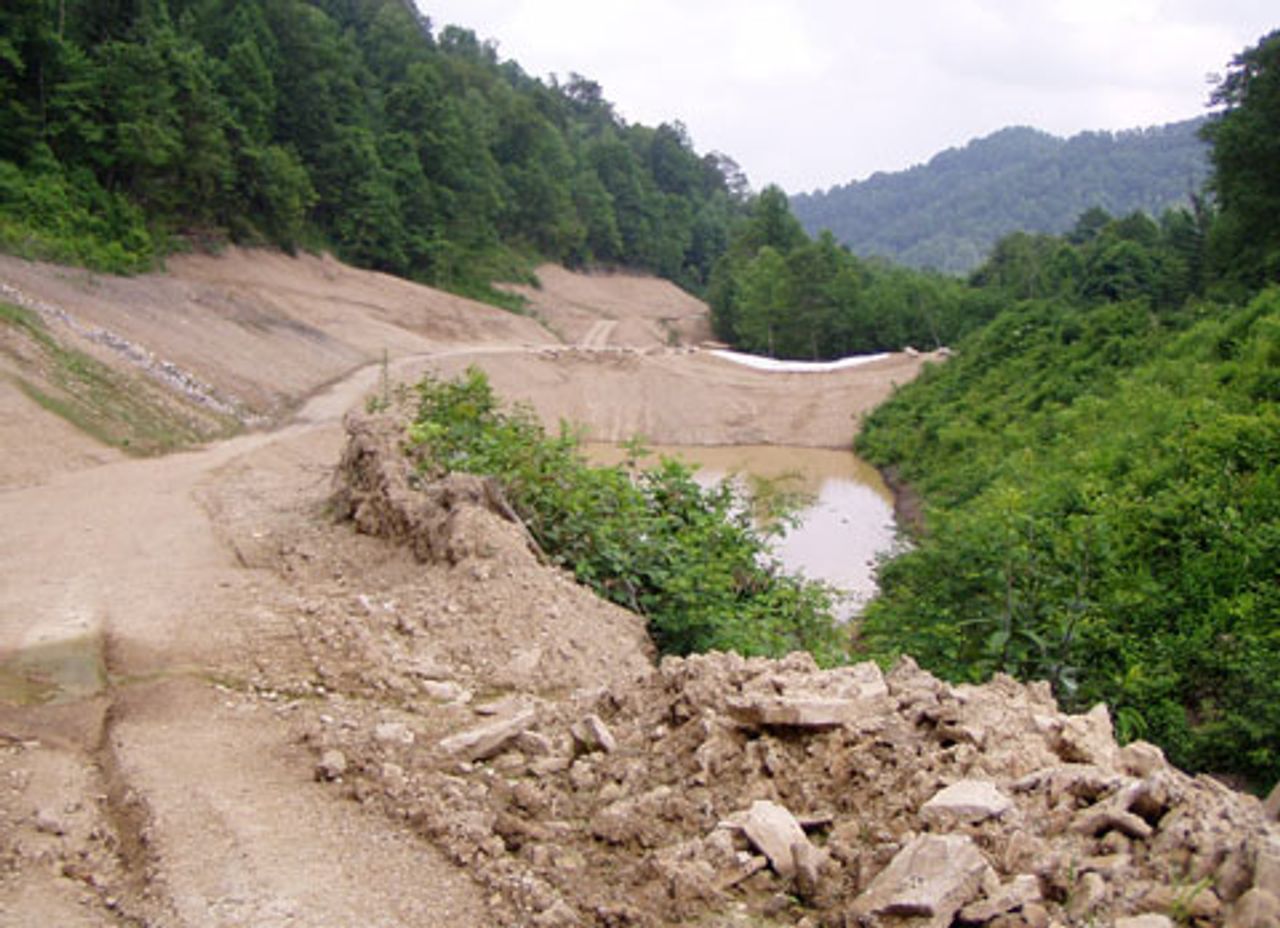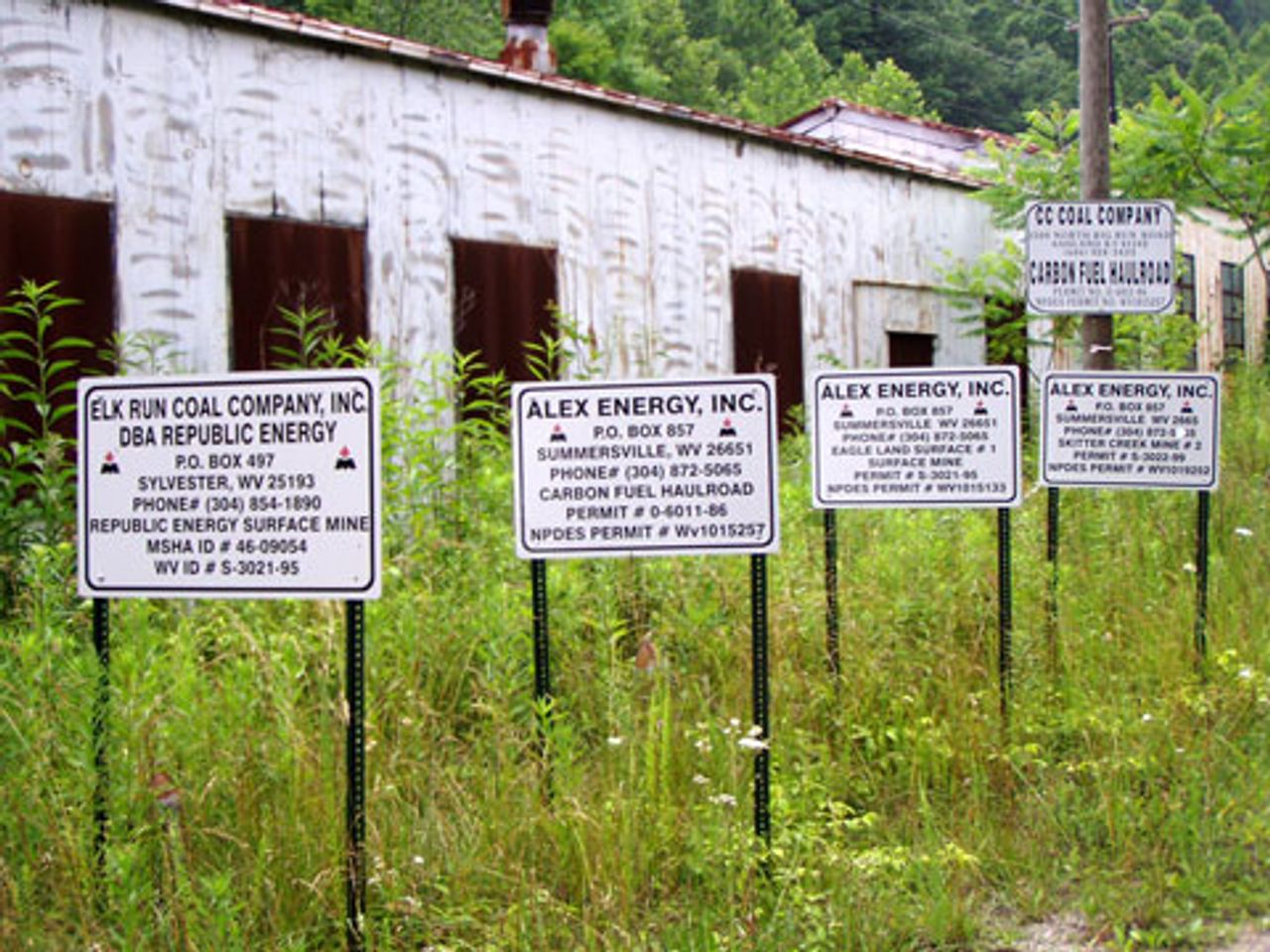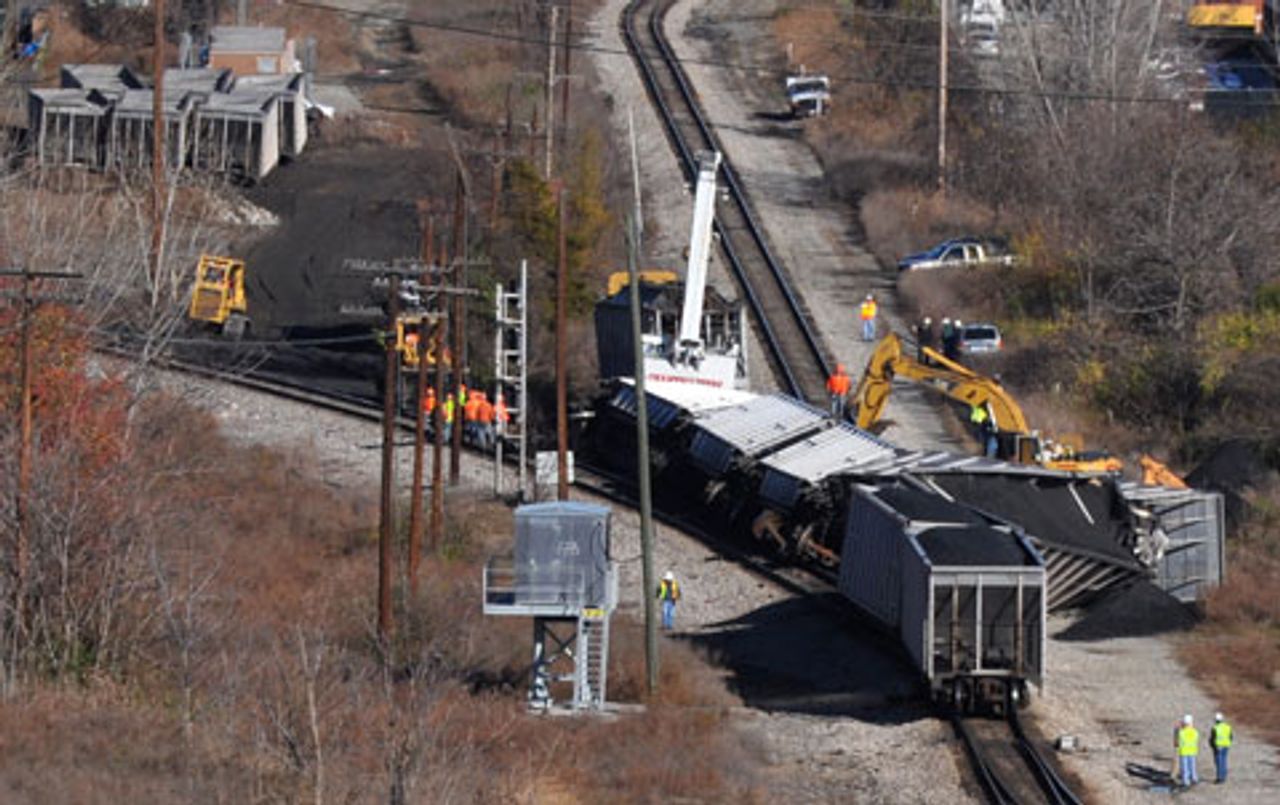Revelations continue to emerge about major lapses in safety at the Upper Big Branch mine in Montcoal, West Virginia, site of an explosion that killed 29 miners on April 5, the worst coal-mining disaster in 40 years.
 17,000 tons of Appalachian coal move east for the coal piers at Hampton Roads, VA.
17,000 tons of Appalachian coal move east for the coal piers at Hampton Roads, VA.Operated by Massey Energy, the mine has a history of safety violations that were ignored by both the company and federal Mine Safety and Health Administration (MHSA) regulators. At present, a buildup of methane gas and coal dust is suspected of causing the explosion.
The names and ages of the dead miners have now been released: Carl Acord, 52; Jason Atkins, 25; Christopher Bell, 33; Gregory Steven Brock, 47; Kenneth Allan Chapman, 53; Robert Clark, 41; Charles Timothy Davis, 51; Cory Davis, 20; Michael Lee Elswick, 56; William I. Griffith, 54; Steven Harrah, 40; Edward Dean Jones, 50; Richard K. Lane, 45; William Lynch, 59; Nicholas Darrell McCroskey, 26; Joe Marcum, 57; Ronald Lee Maynor, 31; James E. Mooney, 50; Adam Keith Morgan, 21; Rex L. Mullins, 50; Joshua S. Napper, 25; Howard D. Payne, 53; Dillard Earl Persinger, 32; Joel R. Price, 55; Deward Scott, 58; Gary Quarles, 33; Grover Dale Skeens, 57; Benny Willingham, 61; and Ricky Workman, 50.
(For photos, see the Charleston Gazette slide show. )
The disaster—and allegations of criminality against Massey and its CEO Don Blankenship in particular—has provoked widespread outrage and consternation.
In mining industry journals, the Upper Big Branch disaster is the subject of much discussion as well—but for an entirely different reason. In the global market for coal, the mine has outsize importance. It produces top-quality, high-value metallurgical (or coking) coal, used domestically and internationally for steel production. Prices for this kind of coal have risen sharply recently.
This raises an obvious question, which government investigators are almost certain to ignore: is there a link between the highly profitable coal mined at Upper Big Branch, the resultant drive for production by the company, and the lethal accident that took so many miners’ lives?
Most coal on the world market is sub-bituminous or bituminous, used for generating electricity—also called steam coal. The US is the second largest global producer of coal—behind China—and 91 percent of its output was used for electricity generation in 2009.
The highest-quality bituminous coal—based on heating characteristics, carbon content, and low ash content—is sold (for much higher prices) as coking coal, for use in steel mills. A steel mill will burn the coal in an oxygen-free furnace that removes nearly all impurities to create coke, which is almost pure carbon. Coke, iron ore, and limestone are the key ingredients in making steel.
 The landscape and a pond created by the mountaintop mining method
The landscape and a pond created by the mountaintop mining methodEnormous seams of bituminous coal of varying grades lie buried beneath the mountains in the Appalachian region of the US. These were the energy foundation of American industrial development in the twentieth century. As the US steel and auto industries began to decline in the 1970s, the domestic market for coking coal shrank as well.
The foreign market, however, is another story. In 2009, nearly two thirds of U.S. coking coal was exported. Although overall Appalachian coal production fell 13 percent in 2009, coking coal production began a sharp turnaround in late 2009 based on export demand.
Globally, Appalachian and Australian coking coal are the only two major sources that meet the standard for high-quality steel production. Some American coal exports are destined for mills in Europe and Brazil, but both European and US steel production have plummeted during the recession. The hothouse economies in China and India have expanding demand for steel, for the moment, despite the recession.
Four of the top six steel-producing countries in 2008 were Asian. China was the number-one producer in the world, making five times as much steel as the US, and four times as much as Japan, which is number two. India and South Korea are also among the top six and growing. Asia has become the biggest market for imported coking coal, consuming 61 percent in 2007.
China, the largest producer of coal in the world, lacks any domestic source of high-quality coking coal. Higher demand for steel production inputs has recently allowed Australian-British mining giant BHP Billiton to secure a 40 percent price increase on iron ore in a Japanese contract. BHP is also the leading Australian coking coal producer, but a recent three-week closure of the company’s Hay Point coal export terminal in Queensland and weather problems have hampered shipments.
As a result of these factors, the price of coking coal had risen from $129/ton in 2009 to over $200/ton prior to the Upper Big Branch Mine explosion and closure. In response, American metallurgical coal producers are expected to produce 50 million tons this year, up 52 percent from last year and more than double the 22 million tons exported in 2007.
 The signs of shell companies for Massey Energy mines in the same county as the Upper Big Branch Mine. The Republic Energy Surface Mine listed in front had one contractor fatality and 4 contractor injuries in 2009, plus almost $90,000 in penalties. Only $14,800 has been paid.
The signs of shell companies for Massey Energy mines in the same county as the Upper Big Branch Mine. The Republic Energy Surface Mine listed in front had one contractor fatality and 4 contractor injuries in 2009, plus almost $90,000 in penalties. Only $14,800 has been paid.Massey Energy, along with Alpha Natural (which bought the coal assets of Pittston Coal Co. in 2002), Arch Coal, and Patriot coal—all with mines in the same southern West Virginia region as the Upper Big Branch Mine—were reportedly already pushing production of specialty coking coal prior to the disaster. Executive Vice President Scott Pack of Alpha told Bloomberg News, “We’re producing a little bit more met [metallurgical] coal as safely as we can at all of our mines. For the most part you’re seeing as much as we can squeeze out of the turnip.”
A February 3 Reuters article noted that Massey Energy was boosting its overall output of steel-making coal. “For all these reasons, we have increased our metallurgical coal sales outlook to a range of 10 to 12 million tons in 2010 and we have begun expanding our metallurgical coal production,” CEO Blankenship is quoted as saying.
The Reuters piece continued: “The company’s previous estimate was for 8 million to 10 million tons of coking coal.… Blankenship said the company’s 12 million tons of metallurgical coal production capacity was expected to rise to about 15 million tons by the end of 2012.”
From the third to the fourth quarter of 2009, Massey nearly doubled production at the Upper Big Branch Mine. No figures have yet been released for the first quarter of 2010. The closure of the mine has sent prices shooting even higher, to $240 a ton for coal at the Hampton Roads, Virginia, export dock. Industry journal Inside Coal estimates that 40 percent of Upper Big Branch coal was for export at this pier.
An industry note by Energy Publishing stated, “In a wild flurry of market activity, buyers from most domestic steelmakers were on the telephone looking for replacement coal,” on the day of the disaster, while “about a day later, international buyers joined the hunt.” The Upper Big Branch mine was scheduled to produce 2 million tons in 2010, just a fraction of the industry total. The outsize effect of the mine’s closure stems from the quality of its coal, which is especially valuable as a “blending” coal, mixed with lower-volatility coal to make specific blends for a steel mill. The loss of production is expected to cause “a ripple effect” as steelmakers are forced to use different blends that require more coal.
Any objective investigator would consider whether the drive to increase output was a component of the explosion at the Upper Big Branch Mine. Again, there is no reason to believe that the MSHA or anyone else will look into this.
A close analysis of the MSHA’s citations at the mine reveals that even the most serious citations—for the accumulation of coal dust, improper ventilation plans, exposed electrical equipment, and insufficient roof support and protection—were repeatedly ignored. From the standpoint of Massey’s executives, these citations are merely barriers to non-stop production. Massey CEO Don Blankenship said as much in June 2009, calling mining safety regulations “difficult to comply with” and “nonsensical.”
 A recent derailment of a CSX coal train in Richmond, VA, because of a broken rail. The train was carrying 13,000 tons of Appalachian coal shipped daily to a powerplant near Richmond.
A recent derailment of a CSX coal train in Richmond, VA, because of a broken rail. The train was carrying 13,000 tons of Appalachian coal shipped daily to a powerplant near Richmond.The hundreds of safety citations at the Upper Big Branch Mine are not unique to Massey. Nearly all underground mines with considerable production in southern West Virginia have citations for the same safety issues as the Upper Big Branch Mine. Mountaintop mines, which access coal seams by blasting away mountain earth and exposing the seams to the surface, have fewer citations—but they also have notorious environmental side-effects, including the poisoning of drinking water.
The top MHSA citation for US underground mines in 2009 relates to the accumulation of combustible coal dust. The third most common citation warns of improper ventilation. In 2009, as overall production fell, the issuance of this type of citation increased 11 percent.
In response to the Upper Big Branch closure, Massey has announced it will attempt to make up production through operations at other mines. The other major metallurgical coal exporting companies are already moving to use the closure as an opportunity to expand market share and profit from spiked prices. Following the industry pattern of contempt for safety standards, this drive for production creates the possibility for further disasters.
Subscribe to the IWA-RFC Newsletter
Get email updates on workers’ struggles and a global perspective from the International Workers Alliance of Rank-and-File Committees.
